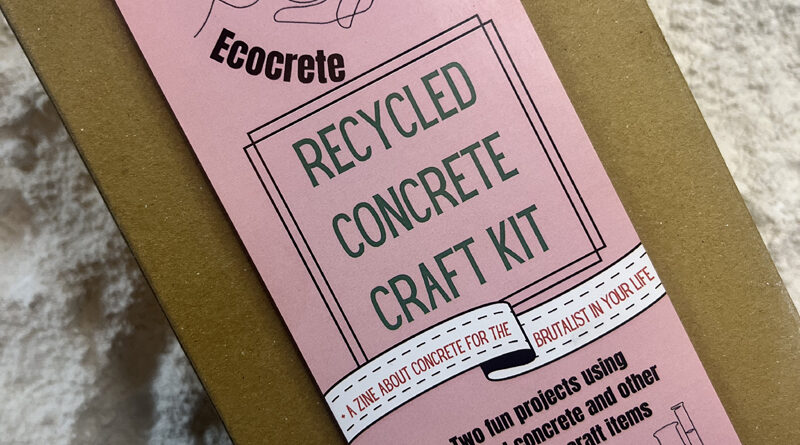ECOCRETE – LIKE CONCRETE, BUT ECO-FRIENDLY
 Concrete may not seem like a likely craft material and certainly not an eco-friendly one, but take a look at ECOCRETE, and you’ll start to think differently. So, what is Ecocrete and what makes it eco-friendly? We chat with Ecocrete founder Heather Garlick.
Concrete may not seem like a likely craft material and certainly not an eco-friendly one, but take a look at ECOCRETE, and you’ll start to think differently. So, what is Ecocrete and what makes it eco-friendly? We chat with Ecocrete founder Heather Garlick.
What is Ecocrete?
Ecocrete is a fun craft kit with a sustainable twist. It homes in on the new concrete homewares trend and provides the material to make and decorate two concrete pieces for your home.
The first is a ring cone for displaying all your trinkets. The second is a free choice project which encourages you to ‘rethink your recycling’ and use waste plastic from around the home as a mould to create your own unique piece. There’s enough mixture to make a mid-size plant pot.
Also included is eco-friendly pigment paint and some pretty recycled shards which can be used to decorate your finished piece.
The twist is that while the production of traditional concrete is one of the world’s primary polluters, these kits are 95% recycled, allowing your concrete pot to be sustainable as well as beautiful. Included in the kit is a ‘mini-zine’ which explains more about the harmful effects of concrete in its traditional form and how the alternatives can really improve our carbon footprint. Don’t worry, all the packaging is recycled and or recyclable too!
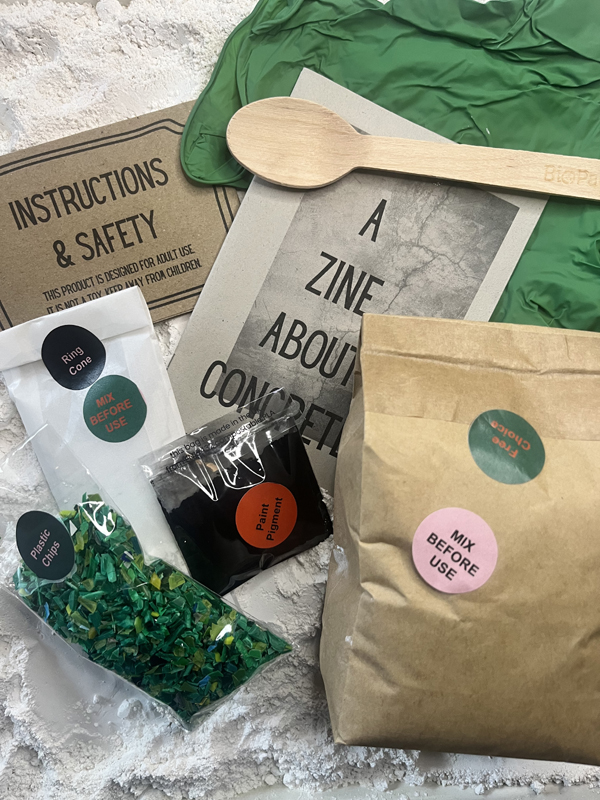 What inspired you to create Ecocrete?
What inspired you to create Ecocrete?
I was inspired to take on a project like this because although I am sustainably minded, I get frustrated by how worthy most of the eco-conscious world can sometimes be. Working for a greener, more eco-friendly world should be fun and engaging. I also think it’s important to show that it’s not all about cutting things out. We can still build and produce; we just need to think about how we go about it.
A few years ago, I was inspired to build my own self-moulded concrete worktop and fell down a rabbit hole of trying to make it as sustainable as possible. I was pleased to find there were loads of sustainable substitutes for the cement element but frustrated when I discovered that it was impossible to find it in any quantities smaller than would be required to build a road. In the end I tracked down a chap at a quarry in Clitheroe who was willing to ‘dip a bucket in the silo’ for me. I felt really strongly that products like these should be more widely available and so when I came to take a career break earlier this year I thought I would make Ecocrete my passion project.
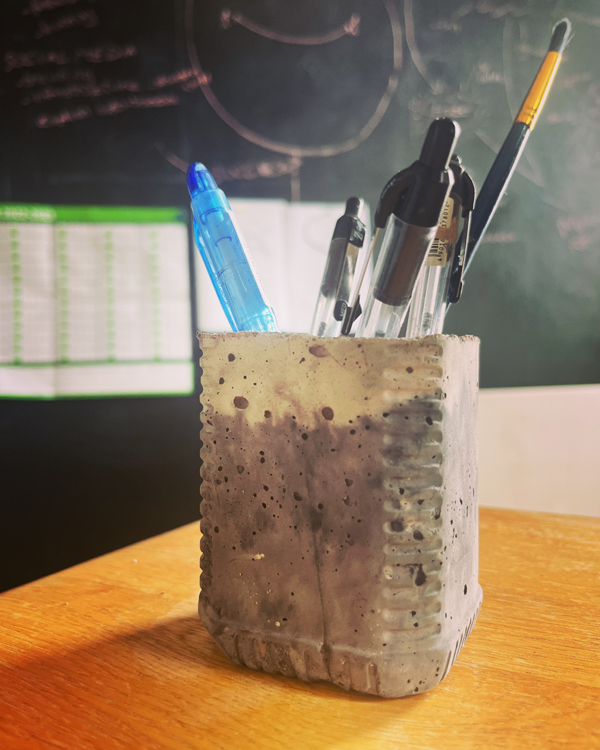 What can you make with Ecocrete?
What can you make with Ecocrete?
What I love about Ecocrete is that not only does it employ eco-friendly materials; it really encourages you to think differently about the disposables around your house and try to employ them in a more imaginative way. I have a pencil pot made from an old milk bottle, a candle in what used to be a pasata carton and a vase employing a whisky bottle and a single use noodle bowl. And because the moulds can then be recycled themselves, their lives are being greatly extended.
What are the issues that Ecocrete is helping to address?
Concrete is central to economic development, both in developed and underdeveloped economies. It’s cheap, strong, resilient, and flexible in its use. It doesn’t burn, rot or rust. This has resulted in it being the most abundant manmade material, surpassed only by water in its rate of consumption. Unfortunately, it has also resulted in it being one of the most deleterious for the Earth’s environment.
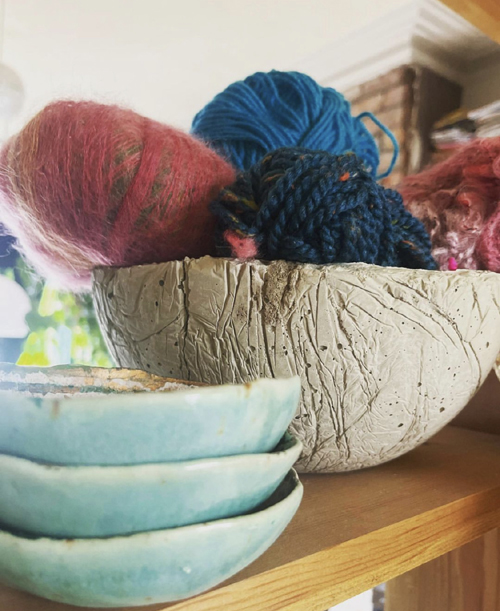 The production of the cement, one of the constituent elements, contributes approximately 8% of the earth’s CO2 emissions. Another constituent element is sand which is now so in demand that criminal gangs are dredging rivers and beaches for money. In India, sand mining is now the largest organised criminal activity in the country. The practise has erased two dozen Indonesian islands since 2004 and has made the Yangtze River more vulnerable to drought. Also of concern is the massive amount of water used to make concrete. This is no great worry in our climate but many of the places where concrete production is most concentrated are areas which suffer from water poverty and drought.
The production of the cement, one of the constituent elements, contributes approximately 8% of the earth’s CO2 emissions. Another constituent element is sand which is now so in demand that criminal gangs are dredging rivers and beaches for money. In India, sand mining is now the largest organised criminal activity in the country. The practise has erased two dozen Indonesian islands since 2004 and has made the Yangtze River more vulnerable to drought. Also of concern is the massive amount of water used to make concrete. This is no great worry in our climate but many of the places where concrete production is most concentrated are areas which suffer from water poverty and drought.
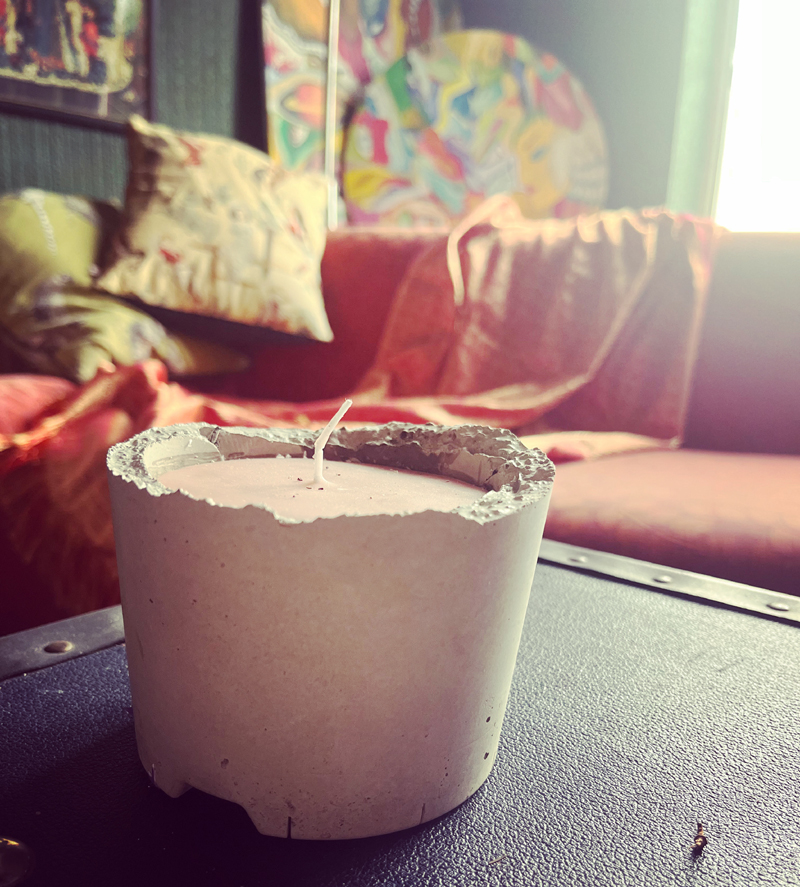 How is Ecocrete tackling these problems?
How is Ecocrete tackling these problems?
Ecocrete uses some really innovative alternatives which reduce the need for those ecologically problematic elements. The ballast element of sand and gravel is largely replaced by recycled building materials; bricks and concrete which are ground to be the appropriate consistency. As this is done on the outskirts of Manchester it means that there’s likely a little of our industrial heritage in each creation which I love. Our kits also include recycled plastic shards which can add a decorative element in this context but are being used to build roads in Australia. Meanwhile, the need for cement is reduced by substituting in a pozzolan. Pozzolans are actually biproducts of other industries, for example blast furnace slag, which has cementitious properties. Interestingly, this is similar to the material used to make concrete building materials in Ancient Rome.
As far as I know this is one of the very few concrete casting kits on the market and the only eco-friendly one! I’m of the view that there should be much more availability in the world of environmentally conscious crafting. It’s such a lovely type of gift to give; something that encourages creativity with a conscience.
Where can we buy/find out more in UK?
You can buy Ecocrete gift sets on Etsy at our shop @ecogiftsconcrete or on our website ecocrete.uk.

